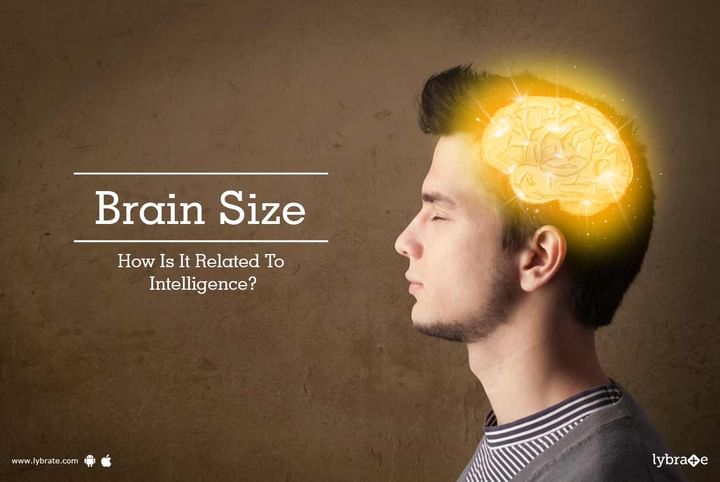Get the App
For Doctors
Login/Sign-up
Last Updated: Oct 23, 2019
BookMark
Report
Brain Size - How Is It Related To Intelligence?
The relationship between intelligence and brain size, both among people and between various species, has never been precisely well defined. People often believe that their outstanding psychological capacities must mean that they are superior to all animals as far as brain size is concerned. However, it is not true since whales and elephants have much bigger brains than humans and humans have the same brain-to-body mass proportion as mice do.
Here are a number of ways by which the brain size can be determined:
- Encephalization remainder: Since it would be against human instinct to admit loss and defeat, researchers have created a measure to determine the brain size called the encephalization remainder. It is the proportion of actual brain mass with respect to the anticipated cerebrum mass for the animal’s size (based on the suspicion that bigger animals require somewhat less brain matter with respect to their size, compared to little animals). By this metric, human beings prove to be the best, with an EQ of 7.5 outperforming the dolphin's 5.3 and the mouse's 0.5.
- IQ testing: Without a solitary and evident method for measuring intelligence, some improved tests like IQ (Intelligence Quotient) are by and large acknowledged as a moderately decent working device. IQ estimations are not without issues, and there is a great deal of criticism about their significance. IQ testing uses government sanctioned tests, for example, the WAIS–III (Wechsler Adult Intelligence Scale). The normal IQ is somewhere around 90 and 110. The scores beneath the normal may demonstrate changing degrees of pathology, for example, marginal intellectual function, or mental hindrance of different severity. Over the normal range is regularly connected with knowledge, splendour, talent, or genius. However, as with computers of a few eras, size and intellect do not precisely relate. Present day portable computers weighing around one or two kilogrammes can store more data and perform a greater number of assignments than supercomputers from the 1980s that used to possess expansive structures. This is a contrast amongst quantity and quality. Numerous scientists now hold the view that it is not the whole brain, which is bigger in a human with a higher IQ, yet rather certain zones that are denser and might be bigger. A fascinating late revelation is that these ranges can be expanded in size and enhanced in usefulness during the course of our life.
- NeuroplasticityIt refers to the dynamic procedure of repair and maintenance that our brains are continually experiencing. We are conceived with around hundred billion neurones, yet lose around two hundred thousand a day to a procedure called pruning. As we develop and grow, pathways in the brain that are not required are detached, and the neurones pass on. However, in a compensatory procedure, new neurones are delivered and more detailed associations are built up between neurones that are more dynamic. This is the procedure of de-cluttering, in which our brains develop to work at most extreme effectiveness.
In case you have a concern or query you can always consult an expert & get answers to your questions!



+1.svg)
